I haven’t been sleeping. I stir, thoughts queue, and like it or not, early morning or middle of night, I’m up. But moving in the wee hours isn’t all bad. A dark and quiet house has its own magic — like that moment when the car is packed and the road is open: my most hopeful hour.
Accepting that the day has begun, I slip downstairs, start coffee and toast, and go to the wood stove. I rake for coals, then add kindling. One match bursts. Flames climb the wood splits, shadows dance. To the east, winter dawn reaches fingers towards receding stars. In a bush near the house a red cardinal watches the day grow — its call lands in the lull between a clang and a boom from the switchyard downtown. A car zooms around the corner with lights flashing, yesterday’s news flying out the window.
The toaster pops. I strain my coffee, glug in cream, and lay a full slice of yellow butter atop the toast. If the banjos on the wall had mouths above necks, they’d be open. I sit at the stove door, warming my hands. Butter disappears into the slice. I sip. And crunch. And hope that toast lasts forever.
This bread, whose purpose in life is to become toast, has had its laps around the block. The recipe began as a long-fermented hearth loaf, amended with raisins, oats, butter for tenderness, and enough cinnamon to make a box of red hots. Early bakes were pretty good: deliciously toasty, golden and nutty, with raisin rewards in every bite.
But it was too sour. Cinnamon contains an aldehyde called cinnamaldehyde that is both antifungal and antibacterial. It’s used in packaging to keep foods from molding. That’s great for your wheat flakes or Rainforest Crunch but it definitely not good if mixed into a dough at these quantities. Knowing this, I increased the leavening (sourdough culture) and extended bulk fermentation as well as the final proof in search of more volume. While the bread mostly worked, my hacks made it too acidic. (More fermentation = more byproducts of fermentation (organic acids)).
I tried to convince myself it was better than good. I toasted it. I ate it. I took pictures. I gave it away. I thought about it at night. I sought affirmation — It’s good, right? A little too sour? None of this soothed my unsettled feeling or fitful sleep.
So I called in reinforcements. To support the hardworking yeast populations already present in the dough (from the sourdough culture), I added a small amount of commercial yeast. One and a half grams was enough to enable a reduction in the amount of bulk fermentation (and thus, sourness). Under normal circumstances adding commercial yeast to this method would leave the dough and loaves prone to overproofing. But here, with the cinnamon (and raisins, too) slowing things down, it worked perfectly. Yeast is just a tool, y’all. It’s not cheating or a shortcut — use a little when you need it, and adjust seasonally (or skip altogether when the weather is warmer). It’s ok.
As I write, the season has turned a little. The snow’s headed for the exits early and sap is doing laps up and down the trunks of trees. Chickens have started laying again and I got up later than 4:30 AM today. For toast.
Cinnamon oatmeal sourdough
Yield: 2 loaves
Liquid levain:
Bread flour or all-purpose, 35g
Water, 35g
Sourdough culture, 15g
In a small container stir together the culture, flour, and water. Set in a warm place to rise for 8 to 12 hours. The levain is ripe and ready when the surface is cobbled and crinkly with small wispy bubbles.
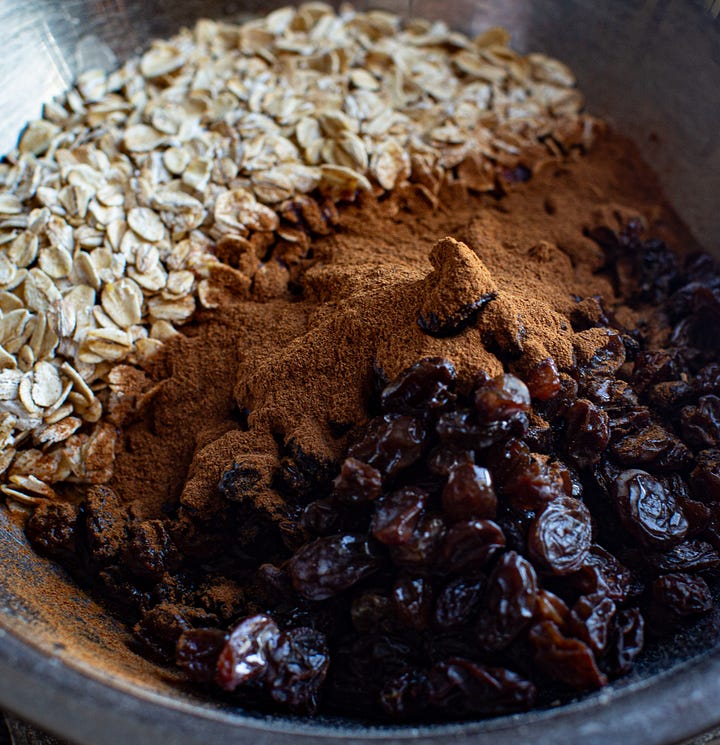
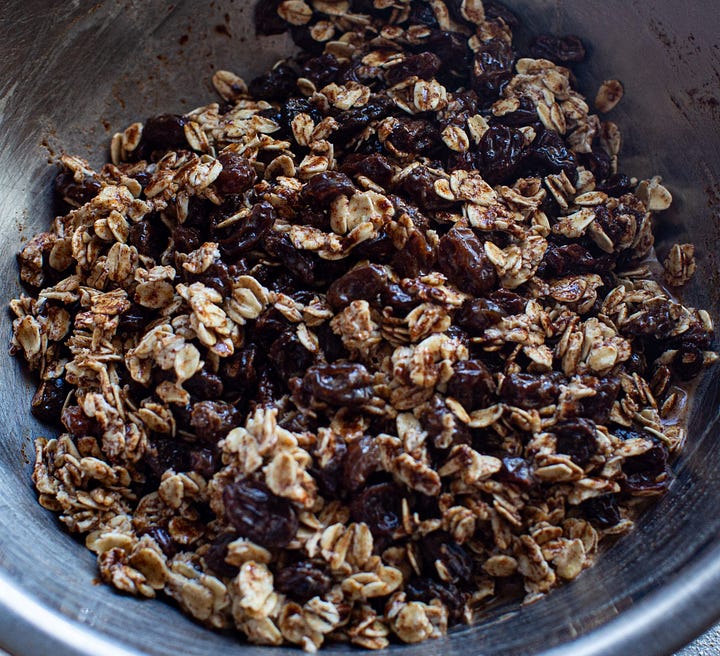
Oat soaker:
This is a quick soaker. While many soakers are mixed a day prior to the mix day, these ingredients are stirred to combine only a short time before incorporation.
Oats, thick or old-fashioned, 109g
Cinnamon, 14g (2T plus 1t)
Butter, unsalted, melted, 57g
Raisins, 203g
Soaker water, hot (120°F), 136g
In a medium bowl, stir everything together. Set aside until use.
Mix:
Bread flour, 12.4% protein, 543g
Whole wheat flour, 136g
Water*, 560g
Salt, fine, 16g
All the levain, 85g
Yeast, instant 1.5g (1/2 t)
*Warm, 100°F in cool months, 75 to 85°F in warmer months. The “DDT” for this dough is 75 to 80°F.
*A quick side note on water temperature. In cold months my flour is usually around 62°F. In order to get a dough temperature between 75°F and 80°F I need almost 100°F water. In warm months with warmer conditions, I use a water that’s closer to room temperature. If this is at all confusing, please drop a comment or question!
In a large bowl (I prefer a lidded 6 quart container), stir together the water, liquid levain, and yeast, then add the flours, and salt. Stir until fully combined with no dry patches then knead briefly in the container with a wet hand to ensure that the dough is homogenous. The dough will be weak and sticky. Set a 15 minute timer.
After 15 minutes, briefly fold the dough then dump the soaker on top. Press the soaker into the dough, poking, pinching, folding, and kneading, until thoroughly combined. It will start out as a mess and resist the incoming ingredients. Keep at it until it begins to take form and gain some cohesion.
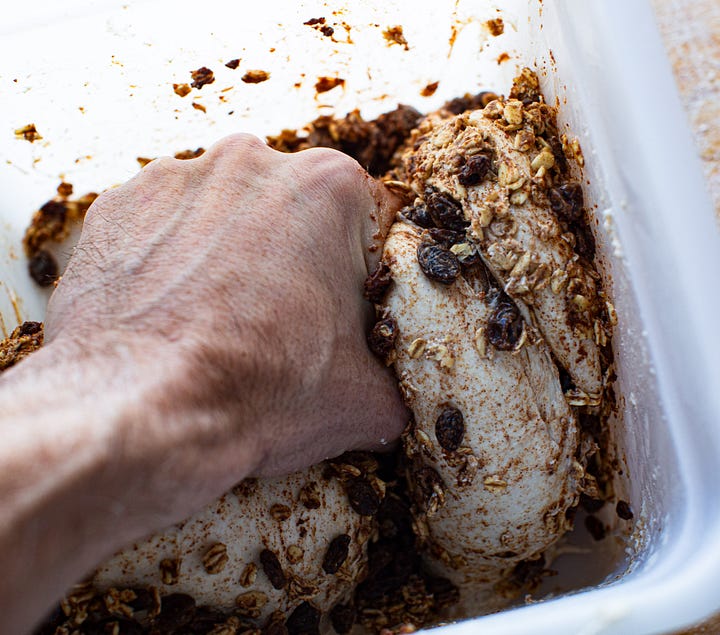
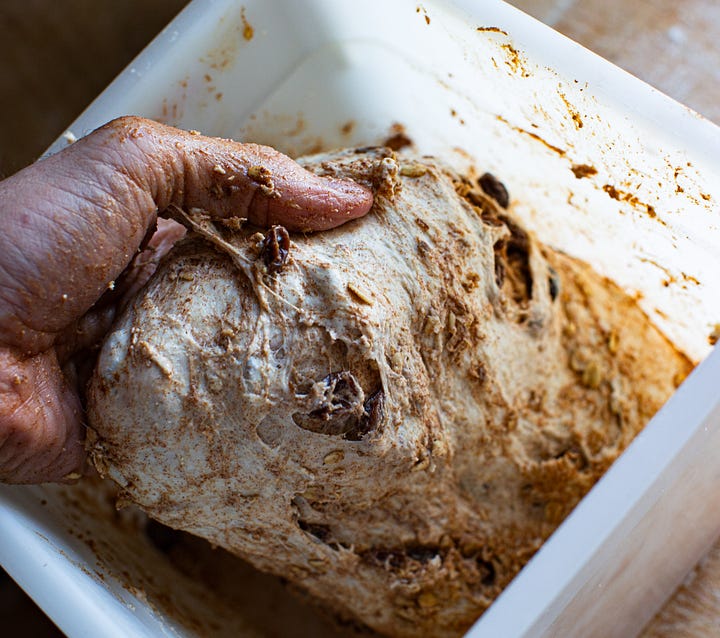
After the first fold and incorporation of the soaker, you’ll fold the dough three additional times over the course of the following 45 minutes. To perform a fold, using a wet hand, grab a section from the outside of the dough, stretch upwards, then press to the middle. Work your way around the dough, performing 8 to 12 of the stretch-and-press motions. By the third fold (45 minutes after mixing) you may find that the dough only requires 3 to 4 of the stretch-and-press motions to tension — that’s normal and a sign that the dough is on track.
After the final fold, one hour after mixing, press the dough flat into the container and mark a line (or use a piece of tape) to note the height. Over the course of the subsequent 2 to 3 hours the dough should rise to 1.5x to 2.0x above the line. When it reaches that point, proceed to the divide.
To divide, dump the dough onto a lightly floured surface and cut into two pieces, about 900g each. Gently preshape into rounds and rest for 30 minutes, covered. *As always, consider the ambient conditions for the rest. Cover the pieces well and avoid cool or drafty spots. While the dough rests, make a tray for the oat crust. Pour a few cups of thick-rolled oats onto a half sheet tray and thoroughly moisten a kitchen towel and spread it out on an adjacent tray.
Shape gently as rounds or bâtards, then, working one at a time, roll the top of the loaf across the towel to thoroughly moisten (the surface should be shiny and wet). Then place the loaf on the bed of oats to fully coat. For best coverage, let it sit on the oats for a moment before transferring into a banneton. *There shouldn’t be a need to flour the banneton in this case. The oats will provide a barrier to sticking.
Cover the loaves with a moisture-proof barrier (or even place the entire banneton in a small plastic bag) and immediately chill overnight.
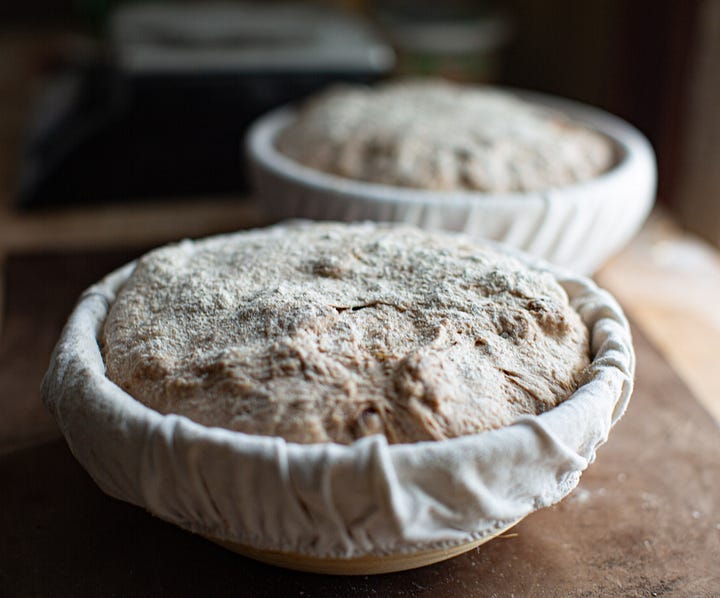
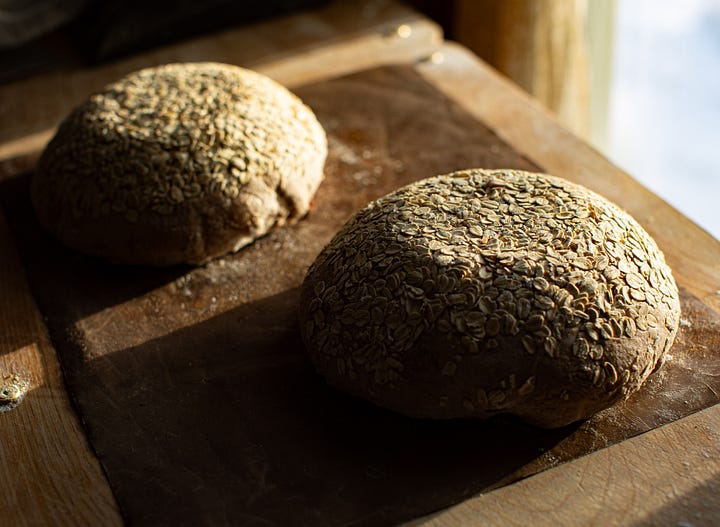
To bake: On day two, about an hour before baking, preheat your oven with a preset baking stone, steel, or covered baker, to 475°F for one hour. Score and load the loaves directly from the refrigerator (adding steam using the method of your choice). After loading, reduce the oven to 450°F and bake for 20 minutes. Remove the lids of any covered bakers and bake for an additional 20 to 25 minutes, or until the loaves are a deep brown. Turn the oven off and let the loaves coast with the door ajar for an additional 10 to 15 minutes. As with many breads, baking to full color significantly improves flavor and texture. Once baked, if there are any raisins that have migrated to the exterior of the loaf, they should be removed. A hazard of any hearth-baked fruit loaf is that the sugars burn and the fruit becomes bitter.
Cool before eating.

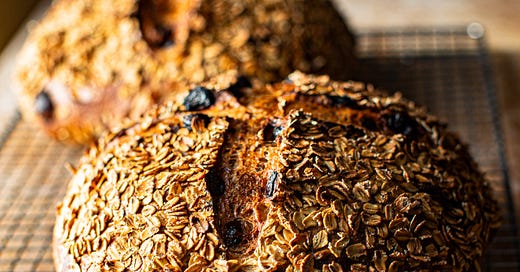


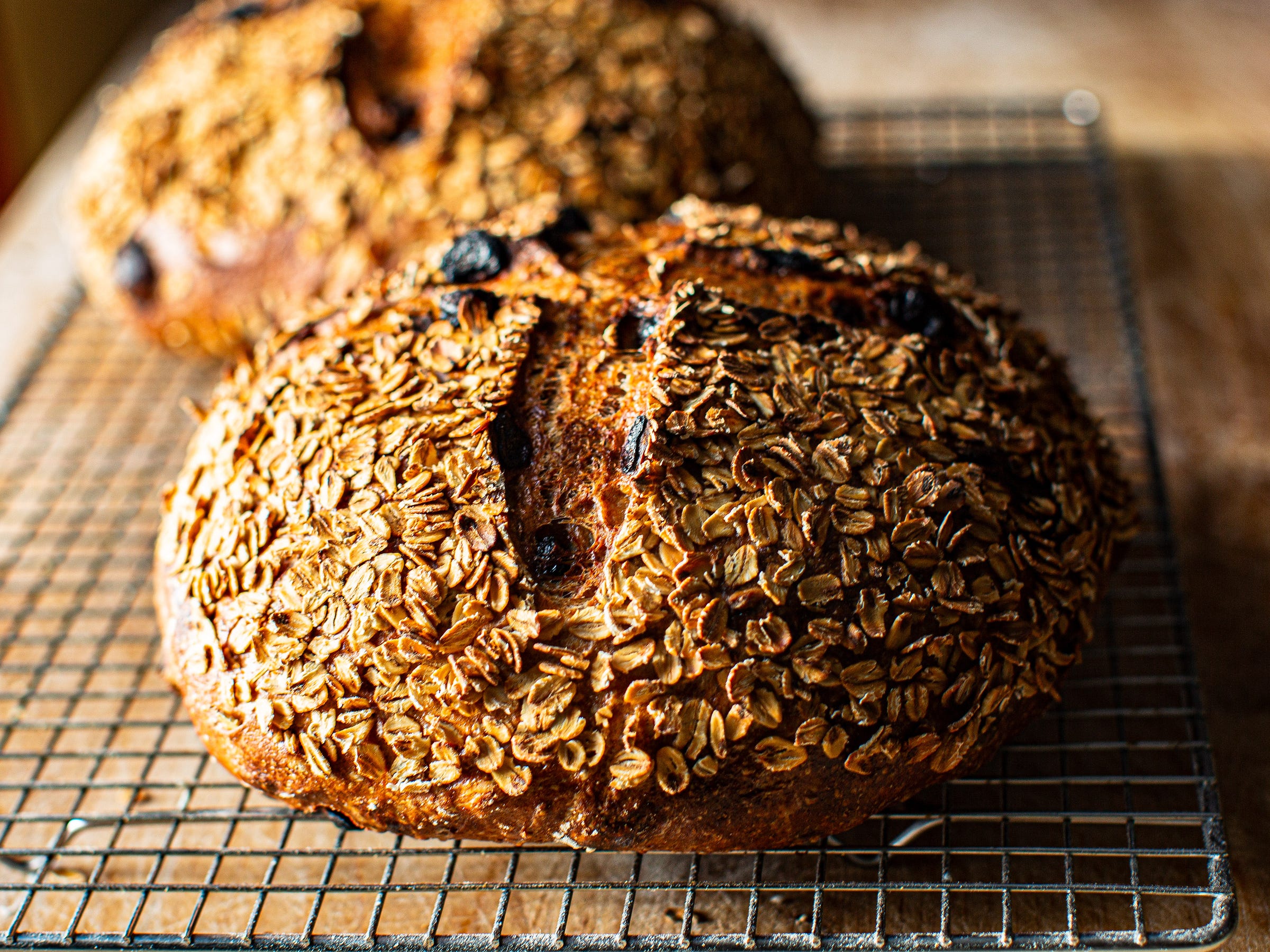
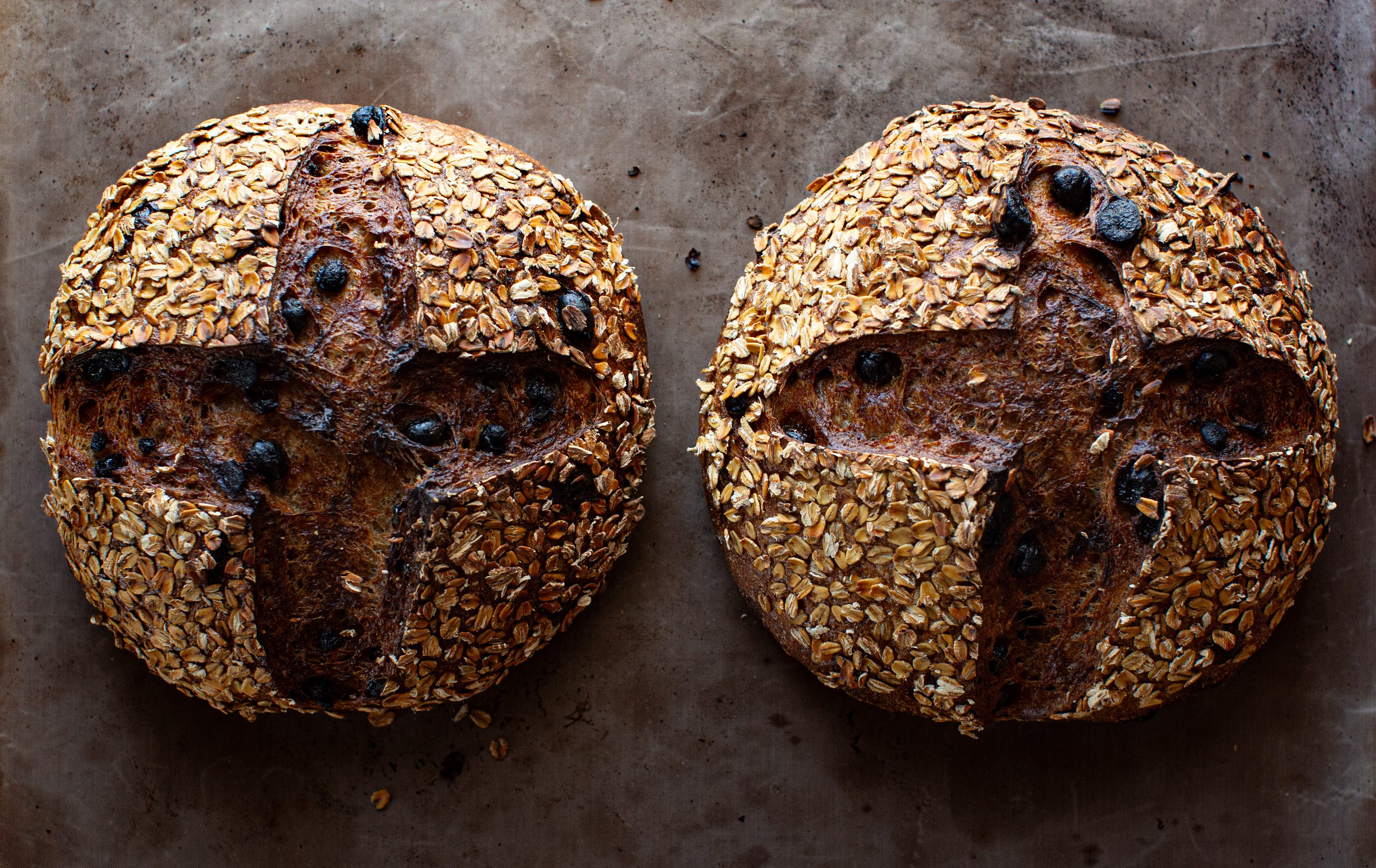

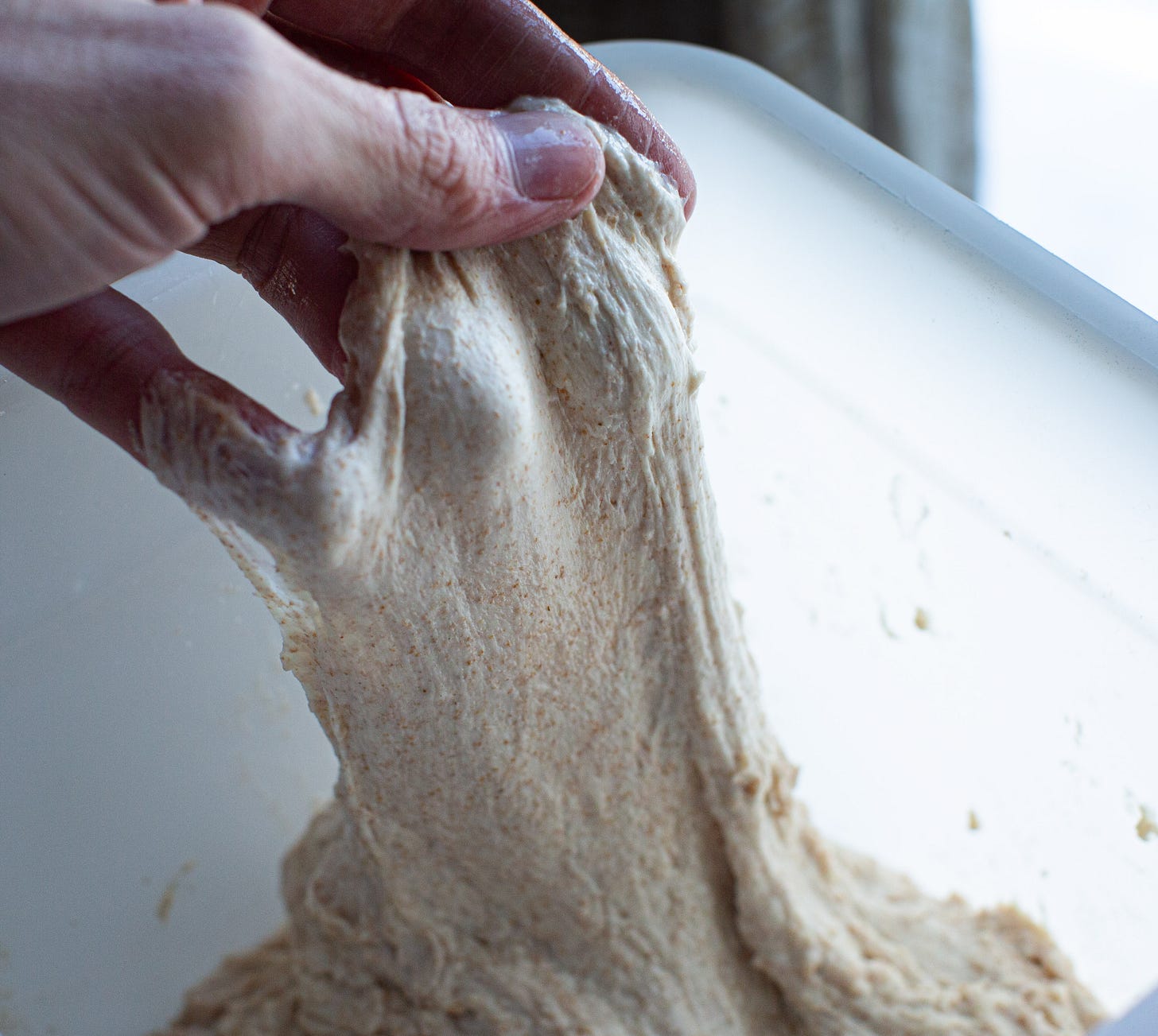
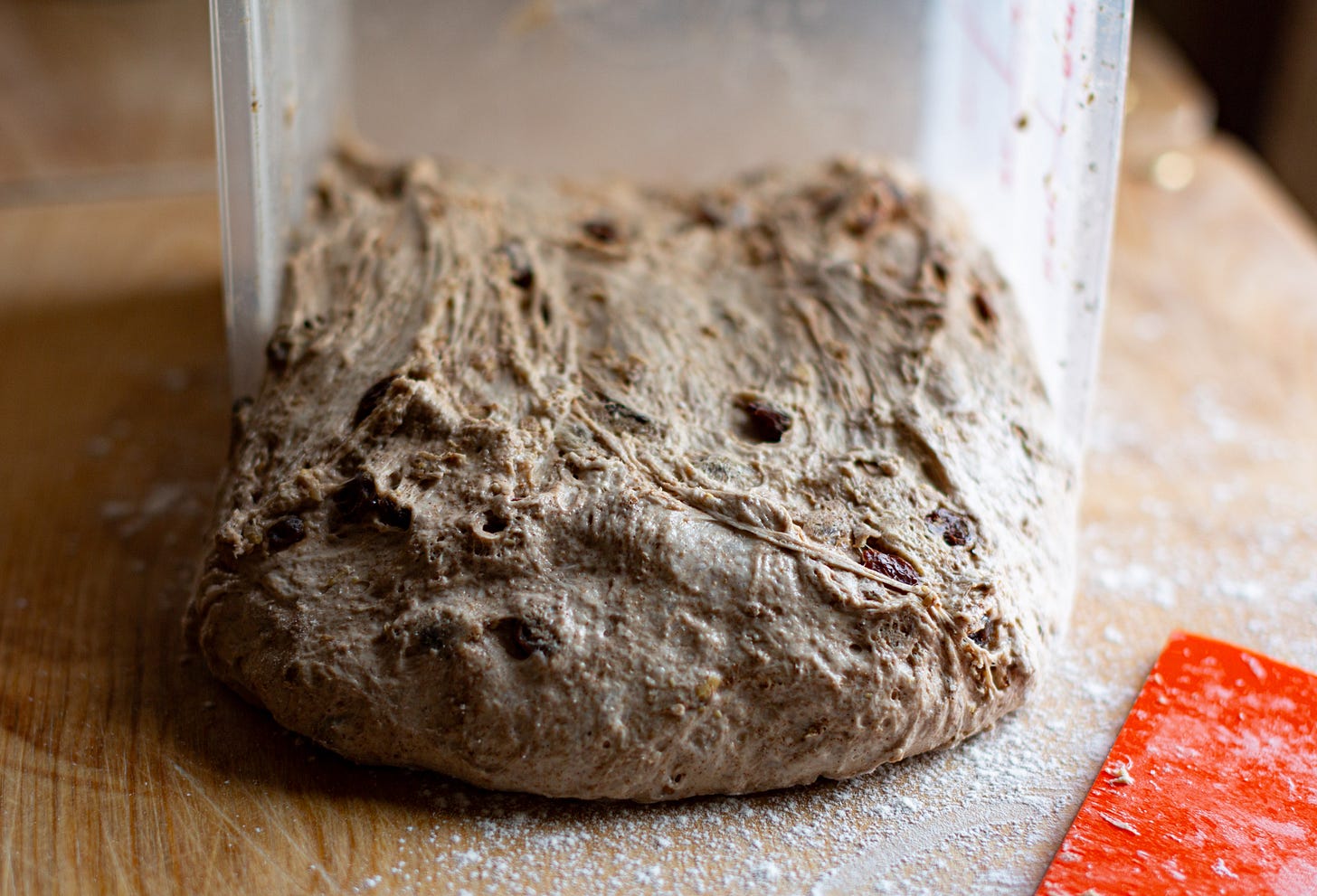
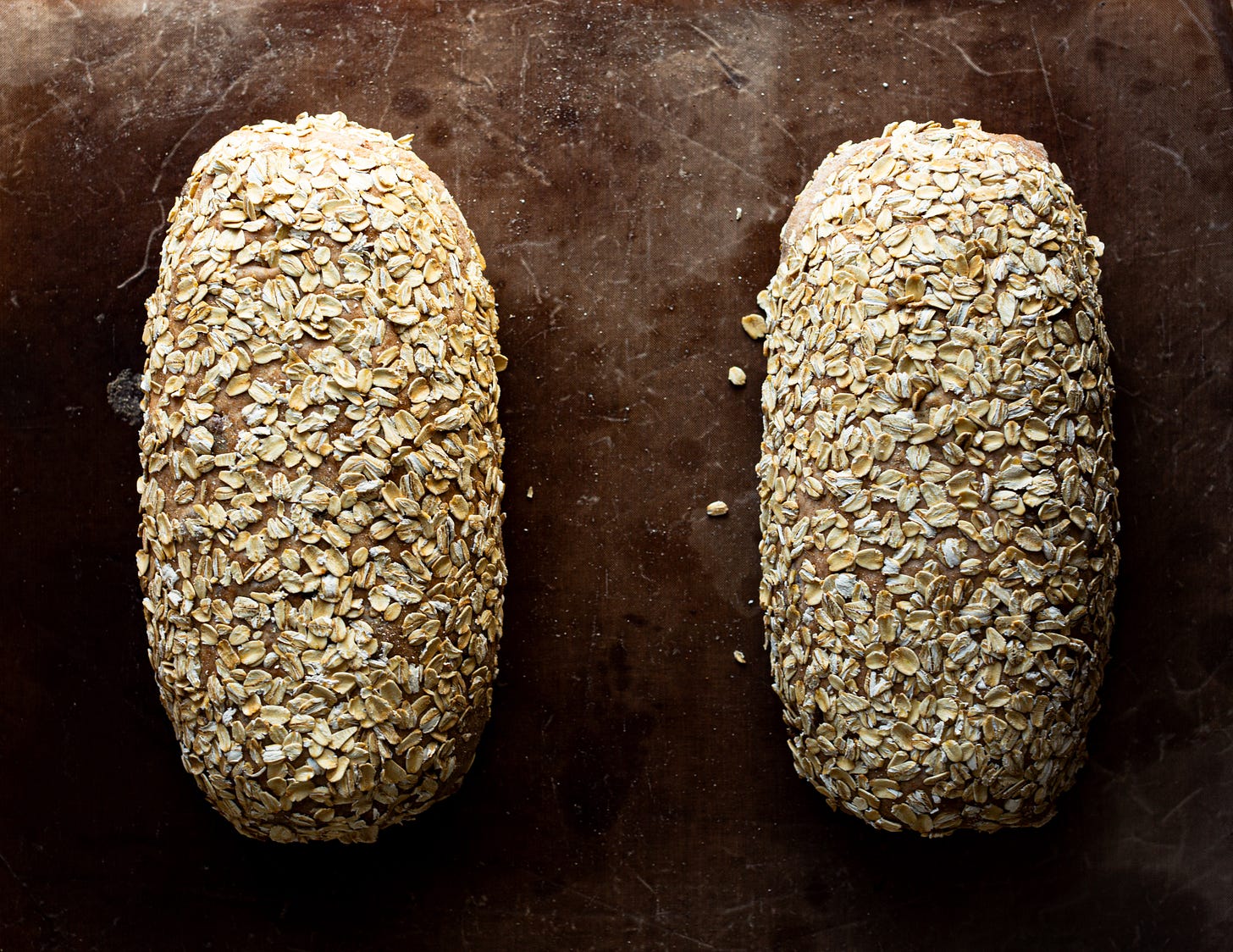

Master baker and poet.
I got to this recipe 5 months late. The tip on the small amount of yeast is spot on. This is among the best loaves I’ve ever er made. Thank you.